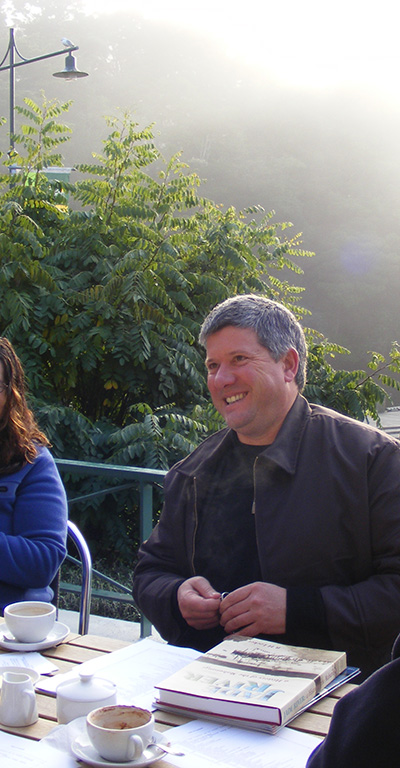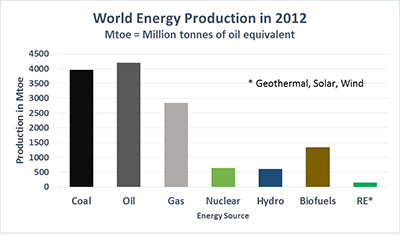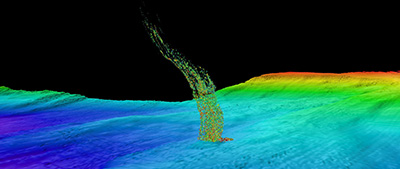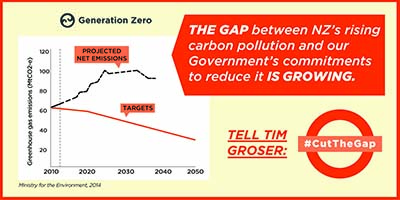Breakfast brainstorming on the next bit

To Proceed at Pace: After a brainstorming breakfast at the Riverview Café hearing about David Hay’s concept for proceeding at pace towards installing a government with a cool-headed climate action plan, those who are willing and able will proceed to Ōrewa to help deliver the Generation Zero cut-the-gap message to the National Party. David Hay at a 2008 Mahurangi brainstorming breakfast. image Sarah Ransom
What John Clarke said of the neoliberal de-democratisation of Aotearoa, in the New Zealand Listener, could equally be said of fossil-fuel use:
Complaining about what’s wrong but not taking action, has the same effect as not noticing what’s wrong.
Clearly Mr Clarke, household name in the 1970s as Fred Dagg, in his poignant New Zealand, a User’s Guide, believes that New Zealanders should have taken action long before their country was asset-stripped:
New Zealanders don’t have much trouble working out what they think. It’s the next bit that might need some work.
A particularly egregious example of asset stripping is currently being perpetrated on quake-ravaged Christchurch by the government, facilitated by a hapless Labour mayor, but it is only the current example in a litany of de-regulation and de-democratisation that has resulted in: the failure to rebuild Christchurch out of harm’s way; Pike River—complete with its debacle over the final resting place of 29 men who knew that what they were doing was nuts but did it anyway; and the casual wrecking of the MV Rena on the unmarked Astrolabe Reef.
Despite leading the world in the development and marketing of virtual beacon technology, the marking of Astrolabe Reef is only now being addressed, three years later. Rather than show up on the ship’s radar as an intermittent echo:
…when the Rena ’s navigation officer altered course ten degrees to port at about 1.30 am on October 5, steering the ship directly at Astrolabe Reef, a virtual beaconautomatic identification system would have tripped the ship’s collision alarm while the ship was still 20 miles away and in plenty of time to make a turn.
Meantime, yet another decimated Crown entity, Maritime New Zealand, is discouraged from implementing shipping lanes on the grounds of regulation being the enemy of efficiency—ships, supposedly, should be encouraged to cut corners. The paucity of this market-knows-best mentality is starkly epitomised by the $47 million Rena disaster. Harried by Tauranga Harbour Control advice to the Rena that the window for pilotage closed at a somewhat arbitrary 3 am, and that she should make best speed, the crew reverted to their signature course-cribbing tricks, with the intention of halving the one-mile margin by which their charted course cleared Astrolabe Reef. But had the geometrically challenged, cut price, flag-of-convenience ship’s master and second mate begun to know their jobs, they would have appreciated that their final, fateful series of shortcuts only ever had the potential of shaving about 45 seconds off the remaining hour-and-a-half run to the pilot station. Except, it wasn’t an hour and a half to the pilot station. Had the Rena cheated the reef, she would have arrived nearly a quarter of an hour ahead of the 3 am deadline, rendering the rev-up received from harbour control, and the high-risk 45-second shortcut, all utterly unnecessary.
The shortcut humanity is taking, is the wreck of the Rena writ large. Fossil fuel abounds, albeit not quite as cheap and convenient as it was in the black-gold days, and with an increasingly heavy footprint, contrary to cheap gas-as-a-bridge-fuel talk. But even if natural gas had had a sufficiently light carbon footprint to serve as a bridge fuel, while business growth proceeded as usual, renewables were never going to be ready to take over with the heavy energy lifting—in 2012, and including geothermal, renewable energy only accounted for 1% of global energy production. With carbon dioxide emissions inexorably rising, and methane levels soaring, it is now all too apparent that the World is going to strike its Astrolabe Reef. What is unknowable, from this distance off, is whether it will be a glancing blow, from which humanity and some of the natural world might eventually recover, or all hands lost.

Challenge of Charting a Cool-Headed Course: The reason that Dr James Hansen consistently advocates for a place for nuclear power is all too evident in this chart, which reveals that, in 2012, renewables, including geothermal only contributed 1% of the world’s energy supply. But even if wind and photovoltaic could be ramped up sufficiently rapidly, their intermittency limits their useful contribution to 20–25%. Greens have to decide which is more important: Their anti-nuclear-power ideology, or the MV Planet. chart IEA Key World Energy Statistics 2014
The reason that the Rena could be wrecked, and that political life could move swiftly on without a wide-ranging, in-depth inquiry into all that contributed to the disaster, is that the ship’s owners were insured. New Zealanders did have to pick up a $9 million shortfall, but with the opposition parties in disarray, the Rena was just one of the many failures of the neoliberal experiment that should have been sheeted home to the government of the day, but wasn’t—that ‘next bit’ that John Clarke suggests ‘might need some work’, including by those primarily engaged in acting local. If collective climate action is too little too late, all the Mahurangi Action Plan achievements imaginable, will be in vain.
The world as a whole, of course, hasn’t been able to take out insurance, although wealthy countries, and echelons within countries, position themselves so as not to be the first to suffer when the MV Planet strikes its climate reef. The crew have seen the intermittent echo on the radar screen, but they continue to crib the corner, rather than throw the helm hard to starboard, and reverse that gargantuan fossil-fuel engine. The reckless headlong rush to port continues; anything short of endless economic growth, unthinkable.
On the bridge of the Rena, with the benefit of a virtual beacon on Astrolabe Reef, growing disquiet would have been replaced by urgent evasive action. The MV Planet is in a situation closely analogous of the MV Rena and the unmarked Astrolabe. Some of the key science required to quantify just how close to the climate reef the world is, hasn’t been funded. Gerry Brownlee’s equivalents in Washington have denied climate scientists the tools they need, for example, to measure atmospheric aerosols:
It is remarkable and untenable that the second largest forcing that drives global climate change remains unmeasured.

Virtual Reef: While many Americans have been deaf to the increasingly urgent warnings from the Arctic of gigantic releases from methane clathrates, this image of a 335-metre tall methane plume off the Washington Coast will have most sitting up and taking notice. The chances of Washington lawmakers breaking free of the clutches of corporate lobbyists long enough to lead the world back from the abyss are slim, but this is where a smart young country can shine. Sonar image Brendan Philip University of Washington
Dr James Hansen is advised that a private-sector space transportation company could measure the largest cause of global warming next to greenhouse gases, for US$100 million—a drop in the ocean; the financial equivalent of Aotearoa investing $1.3 million in virtual beacons. So the ship plunges ahead despite the perils and despite the absence of a rational imperative to do so. The economy doesn’t have to languish, be anchored in the stream awaiting port control, if a Keynesian programme of building the low-carbon infrastructure that is so urgently needed is immediately embarked upon. Similarly, rendering low-lying infrastructure more resilient to sea-level rise, and the myriad other preparations that must be prioritised and programmed, without which the world will otherwise descend to dog-eat-dog, with the high-carbon-culpable certain to remain the top dogs, and the low-carbon commoners, the eaten.
In its devotion to business as usual, the National government has no intention of ordering an abrupt change of course, and is casually risking the wrecking of the MV Aotearoa, rather than dare be anything more courageous than a weaselly ‘fast follower’. New Zealanders have a proud history of not waiting to follow, and to being world leaders of historic change. Size matters, and in this case being a small country with strong track record as early adopters uniquely positions Aotearoa to once more lead the world, this time to clear the reef-strewn ships’ graveyard dead ahead, created by the continued intemperate use of fossil fuels.

Action on the Next Bit: Not that the National government will likely give a damn, what Generation Zero is saying still needs to be said. National has funded much-needed research aimed at reducing agricultural methane emissions, but is negating that, and then some, with its drill-baby-drill idiocy. image Generation Zero
The immediate challenge is to assemble an electable coalition whose flagship policy is a cool-headed course, charted to safely clear the fossil-fuel reef. One person who has been studying the charts closely is David Hay, who, as a Green Party candidate, attended a Mahurangi brainstorming breakfast back in 2008, and is attending this Monday’s:
…I have an idea about how to proceed at pace, which is at a point of development where I need to start discussing it with others to get feedback on the concept.
Monday morning’s breakfast will also serve as the perfect muster point for car-pooling to the National Party’s Rodney electorate office, 7 Tamariki Avenue, Ōrewa, to help send the Generation Zero message to the minister for climate change issues:
Tell Tim Groser to cut the gap!
